Technology
Genius Sports reports Q1 earnings, year-over-year revenue jump
Genius Sports reported its earnings for the first quarter of 2025 Tuesday morning, headlined by a 20% year-over-year revenue increase to $144M. Leading the way was the company’s Betting Technology, Content & Services category, which rose 44% from Q1 2024 to $106.5M in Q1 2025, driven by price increases in contract renewals and renegotiations. Sports […]

Genius Sports reported its earnings for the first quarter of 2025 Tuesday morning, headlined by a 20% year-over-year revenue increase to $144M.
Leading the way was the company’s Betting Technology, Content & Services category, which rose 44% from Q1 2024 to $106.5M in Q1 2025, driven by price increases in contract renewals and renegotiations. Sports Technology & Services, meanwhile, rose 12% to $11.6M, while Media Technology, Content & Services declined 27% to $25.9M. In all, the company’s net loss was $8.2M, a significant improvement from $25.5M in Q1 2024 and $28.2M in Q4 2024 (off $175.5M in revenue).
Highlights from the first quarter included Genius:
- Rolling out its BetVision in-stream wagering product for soccer (this had previously only been available for NFL games, but will now be offered for Genius’ 120+ soccer competition partners, headlined by the French Ligue 1)
- Becoming the NCAA’s exclusive data provider to licensed sportsbooks for all post-season tournaments, including March Madness, through 2032
- Launching its Performance Studio platform and new, data-rich viewing mode for Ligue 1 called Data Zone.
Genius now projects 2025 revenue of $620M, which would represent 21% growth from 2024.
Technology
President Trump signs Take It Down Act | News, Sports, Jobs
President Donald Trump on Monday signed the Take It Down Act, bipartisan legislation that enacts stricter penalties for the distribution of non-consensual intimate imagery, sometimes called “revenge porn,” as well as deepfakes created by artificial intelligence. The measure, which goes into effect immediately, was introduced by Sen. Ted Cruz, a Republican from Texas, and Sen. […]

President Donald Trump on Monday signed the Take It Down Act, bipartisan legislation that enacts stricter penalties for the distribution of non-consensual intimate imagery, sometimes called “revenge porn,” as well as deepfakes created by artificial intelligence.
The measure, which goes into effect immediately, was introduced by Sen. Ted Cruz, a Republican from Texas, and Sen. Amy Klobuchar, a Democrat from Minnesota, and later gained the support of First Lady Melania Trump. Critics of the measure, which addresses both real and artificial intelligence-generated imagery, say the language is too broad and could lead to censorship and First Amendment issues.
WHAT IS THE TAKE IT DOWN ACT?
The law makes it illegal to “knowingly publish” or threaten to publish intimate images without a person’s consent, including AI-created “deepfakes.” It also requires websites and social media companies to remove such material within 48 hours of notice from a victim. The platforms must also take steps to delete duplicate content. Many states have already banned the dissemination of sexually explicit deepfakes or revenge porn, but the Take It Down Act is a rare example of federal regulators imposing on internet companies.
The Take It Down Act has garnered strong bipartisan support and has been championed by Melania Trump, who lobbied on Capitol Hill in March saying it was “heartbreaking” to see what teenagers, especially girls, go through after they are victimized by people who spread such content.
Cruz said the measure was inspired by Elliston Berry and her mother, who visited his office after Snapchat refused for nearly a year to remove an AI-generated “deepfake” of the then 14-year-old.
Meta, which owns and operates Facebook and Instagram, supports the legislation.
“Having an intimate image — real or AI-generated — shared without consent can be devastating and Meta developed and backs many efforts to help prevent it,” Meta spokesman Andy Stone said in March.
The Information Technology and Innovation Foundation, a tech industry-supported think tank, said in a statement following the bill’s passage last month that it “is an important step forward that will help people pursue justice when they are victims of non-consensual intimate imagery, including deepfake images generated using AI.”
“We must provide victims of online abuse with the legal protections they need when intimate images are shared without their consent, especially now that deepfakes are creating horrifying new opportunities for abuse,” Klobuchar said in a statement. “These images can ruin lives and reputations, but now that our bipartisan legislation is becoming law, victims will be able to have this material removed from social media platforms and law enforcement can hold perpetrators accountable.”
CENSORSHIP CONCERNS
Free speech advocates and digital rights groups say the bill is too broad and could lead to the censorship of legitimate images including legal pornography and LGBTQ content, as well as government critics.
“While the bill is meant to address a serious problem, good intentions alone are not enough to make good policy,” said the nonprofit Electronic Frontier Foundation, a digital rights advocacy group. “Lawmakers should be strengthening and enforcing existing legal protections for victims, rather than inventing new takedown regimes that are ripe for abuse.”
The takedown provision in the bill “applies to a much broader category of content — potentially any images involving intimate or sexual content” than the narrower definitions of non-consensual intimate imagery found elsewhere in the text, EFF said.
“The takedown provision also lacks critical safeguards against frivolous or bad-faith takedown requests. Services will rely on automated filters, which are infamously blunt tools,” EFF said. “They frequently flag legal content, from fair-use commentary to news reporting. The law’s tight time frame requires that apps and websites remove speech within 48 hours, rarely enough time to verify whether the speech is actually illegal.”
As a result, the group said online companies, especially smaller ones that lack the resources to wade through a lot of content, “will likely choose to avoid the onerous legal risk by simply depublishing the speech rather than even attempting to verify it.”
The measure, EFF said, also pressures platforms to “actively monitor speech, including speech that is presently encrypted” to address liability threats.
The Cyber Civil Rights Initiative, a nonprofit that helps victims of online crimes and abuse, said it has “serious reservations” about the bill. It called its takedown provision unconstitutionally vague, unconstitutionally overbroad, and lacking adequate safeguards against misuse.”
For instance, the group said, platforms could be obligated to remove a journalist’s photographs of a topless protest on a public street, photos of a subway flasher distributed by law enforcement to locate the perpetrator, commercially produced sexually explicit content or sexually explicit material that is consensual but falsely reported as being nonconsensual.
Technology
The rise of Eintracht Frankfurt: ‘We are showing that big things are possible’
Eintracht Frankfurt have broken through. Their revenues are soaring, their recruitment is the envy of Europe and, after victory over Freiburg on Saturday, they have qualified for the Champions League — the first time they have reached the competition through the Bundesliga. In 2016, the club had to win a relegation play-off. But in the […]

Eintracht Frankfurt have broken through.
Their revenues are soaring, their recruitment is the envy of Europe and, after victory over Freiburg on Saturday, they have qualified for the Champions League — the first time they have reached the competition through the Bundesliga.
In 2016, the club had to win a relegation play-off. But in the six years that followed, they won the DFB-Pokal (2018) — the German Cup — and the Europa League (2022). A lot has happened in nine years and this new high point, secured with a come-from-behind 3-1 win at Europa Park, is just the latest high on their ascent.
But it has not always been that way. Frankfurt have been relegated three times in the 21st century. Before then, they spent the 1990s in financial turmoil, with their squad’s value obliterated by the effects of the Bosman ruling. And while today their Waldstadion, known as Deutsche Bank Park, is consistently full to its 58,000 capacity, and its fans produce one of the fiercest and most vibrant atmospheres in the country, these are relatively modern developments.
Axel Hellmann has lived the ups and downs. Today he is Frankfurt’s CEO and, from the offices in the stadium’s shadow, he describes a life that has been entwined with the club for as long as he can remember.
“I grew up in Eintracht Frankfurt,” he tells The Athletic. “My parents were both members too, and I remember my father taking me to my first game against Kaiserslautern in 1978.”
Hellmann has been a club member since he was three. He has been a spectator, an athlete and, at the end of the 1990s — a decade that saw Eintracht relegated from the Bundesliga for the first time in their history — he was part of a group of 20 supporters who founded what is now the Fanabteilung — the club’s fan department — in response to rising discontent.
That was his route to the executive board. Now, at 53, he has been in charge since 2021.

Frankfurt are backed by a vociferous support (Christof Koepsel/Getty Images)
A year later, in 2022, Frankfurt, then coached by Oliver Glasner, beat Rangers on penalties to win the Europa League and qualify for the Champions League for the first time in the club’s history.
In the minutes after Rafael Borre had scored with the final kick of that shootout, Hellman was left frozen in his seat, exhausted from the tension.
“Everyone was hugging me. Nancy Faeser, the federal minister of the interior and community, on one side. Bernd Neuendorf, the president of the DFB, was on the other. Aki Watzke (Borussia Dortmund’s CEO) was there too. But I was just… nothing.”
It was an emotional tussle between what victory meant for the club and what the moment was worth to him personally.
“I wasn’t on the pitch for about 45 minutes,” he recalls. “All the other officials went down, but I was just left sitting in my seat because it was such a personal moment and so full of memories. In 1980 (when Frankfurt had won what was then the UEFA Cup) I had been in the stadium with my father.”
The experience of being in the stadium and the notion of fandom itself has changed dramatically in the years since.
“In the 1970s, when I first went,” Hellmann remembers, “our average attendance was 28,000.
“In the 1980s, it was even lower. In the 1990s, it went up but football was not as popular. And the football and club culture were completely different because fans had no voice and no representation.
“There was just the club on the one side, with distinguished personalities from the region. And on the other side, there were fans going in and watching the games.”

Outgoing Eintracht president, Peter Fischer, and Hellmann earlier this year (Alex Grimm/Getty Images)
Most clubs in Germany were originally multi-sport organisations run by their members. In 1998, in recognition of burgeoning commercialism elsewhere in Europe, a concession was made to allow domestic clubs to remain competitive.
The 50+1 rule as it is known today, allows those clubs to run their football departments separately, as public limited companies, provided that 50 per cent of the voting rights — plus one share — remained with the original members.
Eintracht are currently 68 per cent member-owned and the relationship between those members and the club is a perpetual compromise. Ambition versus fan agency. Growth versus regionality. It is both a familiar tension in German football and one of the most interesting aspects of Hellmann’s role.
In 2023, the Deutsche Fussball-Liga (DFL), which operates the Bundesliga, proposed a €1billion (£840m; $1.1bn) sale of marketing rights to a private equity firm drew weeks of protest, with tennis balls thrown from the stands to disrupt games across the country. Eventually, the DFL yielded and abandoned the initiative, but Eintracht fans were among those not to have disrupted games.
Hellmann sees that as emblematic of a healthy relationship.
“It can be very difficult to control the majority of fans, especially with the more emotional topics and because credibility has to be built over a long period of time,” he says. “I’m from the fan scene, so I have more credit than most other executives in the Bundesliga. That is a big advantage — and the investor deal was an example of that.
“Before it became a public story, I told the fans what our position was (that the club would vote in favour of the investment deal).
“They were very sceptical and wanted some red lines drawn. They didn’t want the investors to have too much influence, nor for us to hold matches outside Germany. I took that back to the DFL level.
“So, because I was open before it appeared on the public agenda, it gave me credibility. They thought: ‘OK, if Axel says that there will be no backdoor influence from the investors, then we can believe that.’ And the fans in Frankfurt did not throw tennis balls. They were forced not to. Had they done so they would have lost credibility with me.

Tennis balls interrupt play at Bochum’s game against Union Berlin in December 2023 (Christof Koepsel/Getty Images)
“You can only have a workable long-term relationship if everybody knows what to expect from the other side. As an official or manager, you don’t interfere with fan culture. That is not our business.
“But it’s not their business to discuss with me the strategic approach of the Bundesliga. We have a sensitive mutual understanding of the respective roles we play at the club.”
Hellmann’s broader role is to help his club answer German football’s most difficult questions.
How do they compete with Bayern Munich and Borussia Dortmund, who both enjoy significant financial advantages, and in European football, which is dominated by clubs that benefit from external investment, from sovereign wealth funds, private equity firms, and billionaires?
Being a smart recruiter helps.
Markus Krosche, Frankfurt’s sporting director, is as highly regarded as anyone in Europe. Fredi Bobic, his predecessor, was just as well thought of. Combined, their work has helped define Eintracht as one of the best accelerators of talent in the world.
Last summer, defender Willian Pacho left the club for €40million having arrived for €13m. Two years ago, they paid Brondby €7m for Jesper Lindstrom before selling him to Napoli for €35m.
That is a typical pattern, but there have been outrageous successes. Randal Kolo Muani arrived on a free transfer in 2022 and was sold to Paris Saint-Germain for €95million 18 months later. In January 2025, Egyptian forward Omar Marmoush was sold to Manchester City for €85m, having also joined on a free from Wolfsburg the season before.

Marmoush bids farewell to Frankfurt in January (Kirill Kudryavtsev/AFP via Getty Images)
The future is just as bright. French forward Hugo Ekitike cost €16.5million in 2024 and is worth many times more today. Midfielder Hugo Larsson is similarly valuable, having cost just €9m. It’s no surprise then that, since 2020, Eintracht have recorded the highest overall transfer profit in the Bundesliga (€124m).
Hellmann is keen to stress the role of the environment in that achievement.
“We have one of the best coaching teams in the Bundesliga,” he says. “That’s really important, because we sign young players and the process of educating them, which is what is making us famous at the moment, involves a lot.
“When Omar Marmoush arrived, he wasn’t really a goalscorer, but our coaches worked with him mentally, physically, strategically, and tactically and technically on the pitch. Our team worked on all his abilities and we created a whole new player. It’s good education and good coaching.”
It’s also good business, because Eintracht’s ability to produce players has become a defining characteristic. This is what they do.
“We are open with our strategy when we talk to the players and to other clubs,” says Hellmann. “That’s the reason why we are well connected to other clubs, because they know we take that work seriously.
“We are an international club. We have the airport just around the corner. Frankfurt is an international city with 147 different nationalities. It doesn’t matter if you come from South America or Africa, you have your community here.
“But it’s also a good commercial story to tell. Frankfurt as an open city. Eintracht Frankfurt as a club, where there is performance and discipline. That’s important to tell Adidas when they become our new supplier next season.”

Eintracht’s Deutsche Bank Park (Alex Grimm/Getty Images)
The agreement with Adidas will be worth roughly €5million per season for the next five years, making it the richest manufacturing deal in the club’s history, helping already impressive financial performance.
In 2016, Eintracht recorded turnover of €109.30m. By 2024, that had risen to €390.5m.
The growth can be attributed to the relative strength of the Bundesliga’s broadcasting contract, to continued participation in European competition and, of course, the success of the transfer policy.
But there have been other drivers. Like many clubs in Europe, Eintracht compete — domestically and continentally — with rivals boasting true stars of the game, who are more attractive to new fans and commercial partners around the world.
What, then, is the practical approach to long-term growth?
“If you want to play permanently in European competitions, it is not a question of capital injections but of growing revenues,” Hellmann says.
“So, the No 1 for us as a club is how to open new revenue sources permanently. And since the revenue sources are quite limited in football, where does the additional money come from? The only thing you can is go totally digital.
“So that is what we did. We invested in our digital systems. In e-commerce, sales and marketing, as well as ticketing systems by Eintracht Tech, an entity that we founded six years ago to optimise our digital business models.”
Eintracht Tech is a wholly owned club subsidiary and, essentially, the club’s own software company.
By 2017, commercial inventory had been virtually exhausted. But even just in their domestic market, Eintracht were still competing against clubs who held advantages over them — Bayern and Dortmund, of course, but also RB Leipzig and their supporting network, Wolfsburg, Hoffenheim and Bayer Leverkusen, who (at the time) enjoyed exemptions from 50+1 and benefited from external investment and wealthy patronage.
Eintracht needed to create their own advantages. So, with many clubs outsourcing their e-ticketing and e-commerce to third parties, they decided to bring everything in-house, to create a virtuous cycle of information.

Eintracht’s Niels Nkounkou, Fares Chaibi and Elye Wahi celebrate with the Frankfurt fans in Freiburg (Markus Gilliar/Getty Images)
Timm Jaeger is Eintracht Tech’s CEO. He has worked for the Boston Consulting Group and BMW. He is also a lifelong Eintracht Frankfurt fan and needed little persuasion to lead the project or tackle its challenges.
“Before, we had no idea who our fans really were or how they interacted with us,” he tells The Athletic. “Our different departments were silos. The media team would decide the best content management solution, the merchandise team decided for the best e-commerce solution and then our ticketing department decided on the ticketing solution.
“If someone called our ticketing department to renew their season ticket, we would have no oversight — no idea that, perhaps, they had been a member for 10 years. If the same fan contacted merchandise to buy a shirt for the 10th year in a row, we had no idea either. It was a disaster.”
The scale of Eintracht Tech’s work goes far beyond replica shirts, tickets and content.
It has overall responsibility for the club’s eSports activities. Deutsche Bank Park is also full of collaborations with other technology companies. Collectively referred to as the Arena of IoT (Arena of Internet of Things), it includes the testing of demand-based irrigation systems, queue management information throughout the stadium, and autonomous vehicles.
And the company works beyond the boundaries of the club, too, with local government and businesses.
“We have to earn money to give our sports department, not take money away; we are a profit centre, not a cost centre,” Jaeger explains.
And the most visible part of that is what has been created around the club’s fans, with the previously disconnected departments now adjoined and optimised.
Since more and more sport organisations understand the importance of data and the necessity of optimising their revenue streams, Eintracht Tech has decided to offer their developed software solutions to other teams inside and outside football as a white-label solution.
“You cannot be innovative and talk about new revenue streams if you have no idea who your fans are,” Jaeger says.
“So we developed all of our software by ourselves. We developed our own fan app. We developed our own ticketing system, we developed our own e-commerce store, we developed our own content management system and we developed our own analytical tools to really be able to understand what each fan is doing with Eintracht Frankfurt.”

Ekitike celebrates victory on Saturday (Markus Gilliar/Getty Images)
It means that instead of fan data being passed into the hands of third-party companies, as it is in other sports leagues — in the NFL, via its partnerships with Fanatics or Ticketmaster, for instance — it is used within the club’s own ecosystem, to improve the experience for the club’s fans, but also to leverage the value of the fanbase.
If the club knows what content the supporters engage with, what events they attend, and what kind of products they buy — and has a proper oversight of that activity — then the value is clear.
In September 2023, the club announced a 12.3 per cent year-on-year rise in its marketing turnover and a 31.8 per cent annual rise in revenue from merchandising. Both were club records.
And the sharing of data inside the club is, from a fan perspective, preferable to the third-party alternative. Eintracht Tech does not use the data collected externally, even with commercial partners. A Data Protection Council also meets twice a year, allowing fans proper oversight of how their information is being used and what commercial aims the company is pursuing.
Again, stresses Jaeger, communication matters.
“We bring everyone together twice a year and tell them everything what we’re doing with the data, because we want to be 100 per cent transparent in what we’re doing,” he adds.
“This creates a lot of trust. Even though not all of our fans are in favour of football’s commercialisation, they understand that we have to improve on the financial side to be competitive on the pitch.
They obviously prefer this technical and data independence that Eintracht Frankfurt has.”
Independence, efficiency; these themes come up regularly with Hellmann. Asked to reflect on his club’s strengths, he talks of trust — allowing people to do the jobs for which they were hired.
“Those in high positions at our clubs are all the same in the sense that they have the freedom to make decisions on their own,” he says. “They are all competent. I’m not the guy who should be making changes to a press release or to what a shirt looks like.
“What I focus on is how we optimise the running of the machine. I’m listening to the engine.
“Is it working properly? Is there anything that it needs? This is what’s important. You shouldn’t waste your energies on issues where you have good people.”

Rasmus Kristensen and Eintracht will compete in next season’s Champions League (Markus Gilliar/Getty Images)
Hellmann still has his season ticket. One day, he says, when his time in club politics is over, he will cross back over to the other side of the Waldstadion, reclaim his seat from the friend who has been keeping it warm, and go back to being a fan. It will be easier. There will be less to organise and fewer tomorrows to worry about.
But that future can wait, because the present is too exciting.
“We are showing that big things are possible,” he adds. “If you see the pictures from three years ago, when we celebrated winning the Europa League, then just watch the people’s eyes. You could see that they were fulfilling a dream.
“I think this city has the ambition for more than what the club has given to them over the last 30 years. But maybe now is the time they can say: ‘Yes, we are back on the stage’.”
(Top photo: Sebastian El-Saqqa – firo sportphoto/Getty Images)
Technology
The Garmin 225 and 955 Are Still the Best Value Fitness Watches, and They’re Always on Sale
We may earn a commission from links on this page. If you’re looking for a Garmin watch at a great price, the recent drops of the Forerunner 570 and 970 is excellent news—not because you should pick up those models (they’re fine, I guess) but because the older generations of Forerunner, which remain excellent watches, […]

We may earn a commission from links on this page.
If you’re looking for a Garmin watch at a great price, the recent drops of the Forerunner 570 and 970 is excellent news—not because you should pick up those models (they’re fine, I guess) but because the older generations of Forerunner, which remain excellent watches, are now going for ludicrously low prices.
The previous models, the 265 and 965, are great, but you can go back one more generation to the 255 and 955—released in 2022—and save hundreds of dollars without sacrificing any major functionality. I truly can’t think of any fitness watch that is a better deal right now, given the prices we’re seeing on these two: currently $247 for the Forerunner 255, and $373 for the Forerunner 955, which is the upgraded version with maps and a few extra training features.
Why am I recommending three-year-old watches? I’ll get into the specs below, but the important context here is that Garmin’s Forerunners have serious longevity. Running app Strava releases year-end trend reports that consistently show older Forerunners among the nation’s and the world’s most popular running watches. The most recent report, for example, had the Garmin Forerunner 245 in third place, after the Apple Watch and Apple Watch SE. That’s a five-year-old watch. Not long ago, the Forerunner 235, then an eight-year-old watch, was the most popular worldwide. These things last!
What the 255 and 955 are missing compared to newer models (not much)

Left: 265S (the smaller, newer model). Right: 255 (the larger one with the MIP screen that’s currently on sale).
Credit: Beth Skwarecki
The numbered models can get confusing, but I promise you’ll be able to follow along. All the watches that start with a 9 are the top-of-the-line Forerunners (the 955 was replaced by the 965 and most recently the 970) and most of those came with a little sibling that starts with a 2 (respectively: the 255, 265, and in a break from tradition, 570).
The 9xx series have onboard maps that let you see exactly where you are and where you’re going. The 2xx watches have breadcrumb navigation that shows you the general shape of the route you’ve already taken. If you need a map on your wrist, you probably want to go for a 9xx.
I wrote about the newest models here, so you can see what the 970 has over the 965 (and what the 570 has over the 265). The big feature is that the 570 and 970 support voice calling and voice texts, and the 970 has a built-in LED flashlight. If those features aren’t must-haves for you, take a look at the next generation back.
The 265 and 965 are excellent watches with important functionality, like dual-band GPS. you can read my review of the 265 here:, and note that the 265 is my own personal running watch, the one that I bought with my own money because I love it. The 265 has a ton of great features for runners. Some are concrete and functional: physical buttons, lots of options for data screens, and a dual-band GPS for extra location accuracy. Others are more software-y but still arguably useful: training status, daily suggested workouts. The battery also lasts between one and two weeks, depending on how many workouts you do.
The 965 has all that, plus onboard maps, so you can see where you are relative to roads, bodies of water, and so on. It’s also got a few extra training statistics, like an endurance score and a heat acclimation score.
The 255 and 955 have all of these same features. The only features that are meaningfully different between the x55 and x65 series are:
-
The 255/955 have the older, always-on MIP screen, while the 265 has a smartphone-style AMOLED screen. I have more here on the difference between those screen types.
-
The 255/955 don’t have touchscreens. You’ll use the UP and DOWN buttons on the left side to scroll through options.
-
The 255 can’t store music, unless you buy the 255 Music version. The 955 has music storage built in, just like the 265 and 965 do.
-
The 255 doesn’t have Training Readiness, but it does have Training Status. (Personally, I never use Training Readiness, so this isn’t much of a loss. You can always look at your HRV trend, which the watch also reports, if you want a sense of how recovered you are each morning.) The 955, 265, and 965 all have Training Readiness.
For the detailed list of every minor feature that’s different between the two, you can check out this comparison page on Garmin’s site.
Which Forerunner 255 version you should get
There is only one Forerunner 955, but there are four versions of the 255, and two versions of the 265.
-
The regular Forerunner 255 is the larger size (45.6 mm) and does not have music storage.
-
The Forerunner 255S is the smaller size (41 mm) and also does not have music storage.
-
The Forerunner 255 Music is the larger size (45.6 mm) and does have music storage, so you can play tunes from the watch while leaving your phone at home.
-
The Forerunner 255S Music is the smaller size (41 mm) with music storage.
Personally, I always have my phone with me when I run, so I’ve never found the standalone music feature very helpful. If you think you might use it, though, it’s normally a $50 upgrade, but currently only a $20 upgrade on the larger size of the watch.
What do you think so far?
To help you decide, the photo above shows the difference in screens between the AMOLED 265S (left) and MIP 255 (right). It also shows the size difference between the smaller and larger models; the 265S on the left is 41.7 mm, very close to the 255S at 41 mm.
How old is the 255, anyway?
The 255 is only one year older than the 265. They were released in 2022 and 2023, respectively. Before that, Forerunner releases tended to be three to four years apart. The quick turnaround between the 255 and 265 makes sense when you realize they’re basically the same watch with a different display.
So I wouldn’t expect a 255 to feel outdated anytime soon. The main question you need to ask yourself is: How do I feel about a MIP screen? I’ve written more about the difference between MIP and AMOLED here. MIP screens don’t light up, although they have a backlight that can come on automatically when you raise your wrist. At rest, they are “always on,” in the sense that they’re always displaying something, so you’ll never look down at a blank screen. They’re also brightly reflective in sunlight.
AMOLED screens are more like a smartphone screen, with glowing pixels, and watches typically turn off the display when you’re not using it to save energy. (You can enable an always-on setting, but it eats battery.) That said, the overall battery life on both watches is similar on default settings—14 days not counting activities for the 255, and 13 days for the 265.
Some people prefer the MIP screens, and if that includes you, this is a no-brainer: snag the 255 or 955. You can even get a refurbished version for $179.99, which makes this one of the cheapest Garmin watches in any line.
The bottom line (check prices)
Prices on Forerunners have been fluctuating lately, so I’m hesitant to give any dollar-for-dollar comparisons, but here’s what I’m seeing at the moment I write this. Officially, Garmin is selling the 255 and 265 for the same price, $349.99. The 955 and 965 are going for the same price, $499.99. At those prices, you might as well get the -65 version of whichever watch you prefer.
But over on Amazon, I’m seeing prices as low as $247 for the 255 and $373 for the 955. That means a 255 is the same price as the anemic Forerunner 165 (it’s OK as a budget watch, but it’s missing a lot of features that the 255/265 have) and the 955 is the same price as a 265! Check prices to see if these deals are still live by the time you read this, and ultimately decide based on features.
Technology
Obsbot named official camera and webcam partner for…
The Esports World Cup Foundation (EWC) has named Obsbot as its official camera and webcam partner for the Esports World Cup 2025, set to take place in Riyadh, Saudi Arabia, from July 07 to August 24. The two-year partnership will see Obsbot’s cutting-edge AI-powered webcams and PTZ cameras embedded into the production infrastructure of the […]
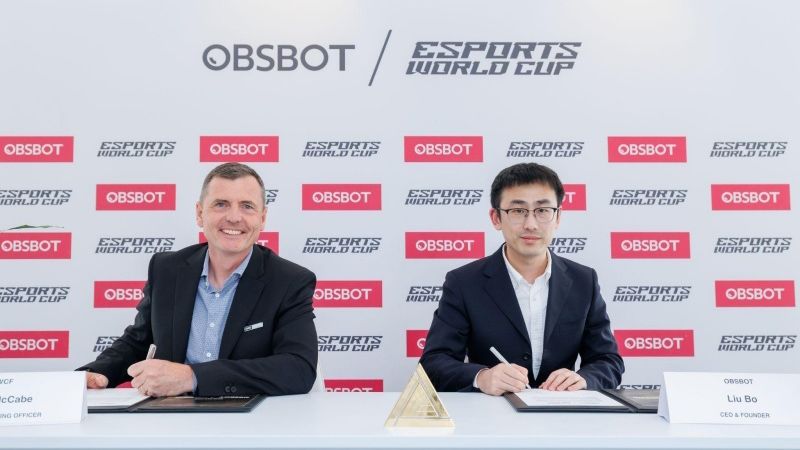
The Esports World Cup Foundation (EWC) has named Obsbot as its official camera and webcam partner for the Esports World Cup 2025, set to take place in Riyadh, Saudi Arabia, from July 07 to August 24.
The two-year partnership will see Obsbot’s cutting-edge AI-powered webcams and PTZ cameras embedded into the production infrastructure of the world’s largest esports event, delivering next-generation video quality and immersive viewing experiences to millions of fans worldwide.
The collaboration is part of the EWC’s broader strategy to strengthen ties with China’s thriving esports and tech sectors, integrating innovation from one of the most dynamic gaming markets into its global ecosystem.
“The Esports World Cup is built on innovation, and technology plays a crucial role in creating unforgettable moments for players, Clubs, and fans,” said Mohammed Al Nimer, senior sales director at the Esports World Cup Foundation.
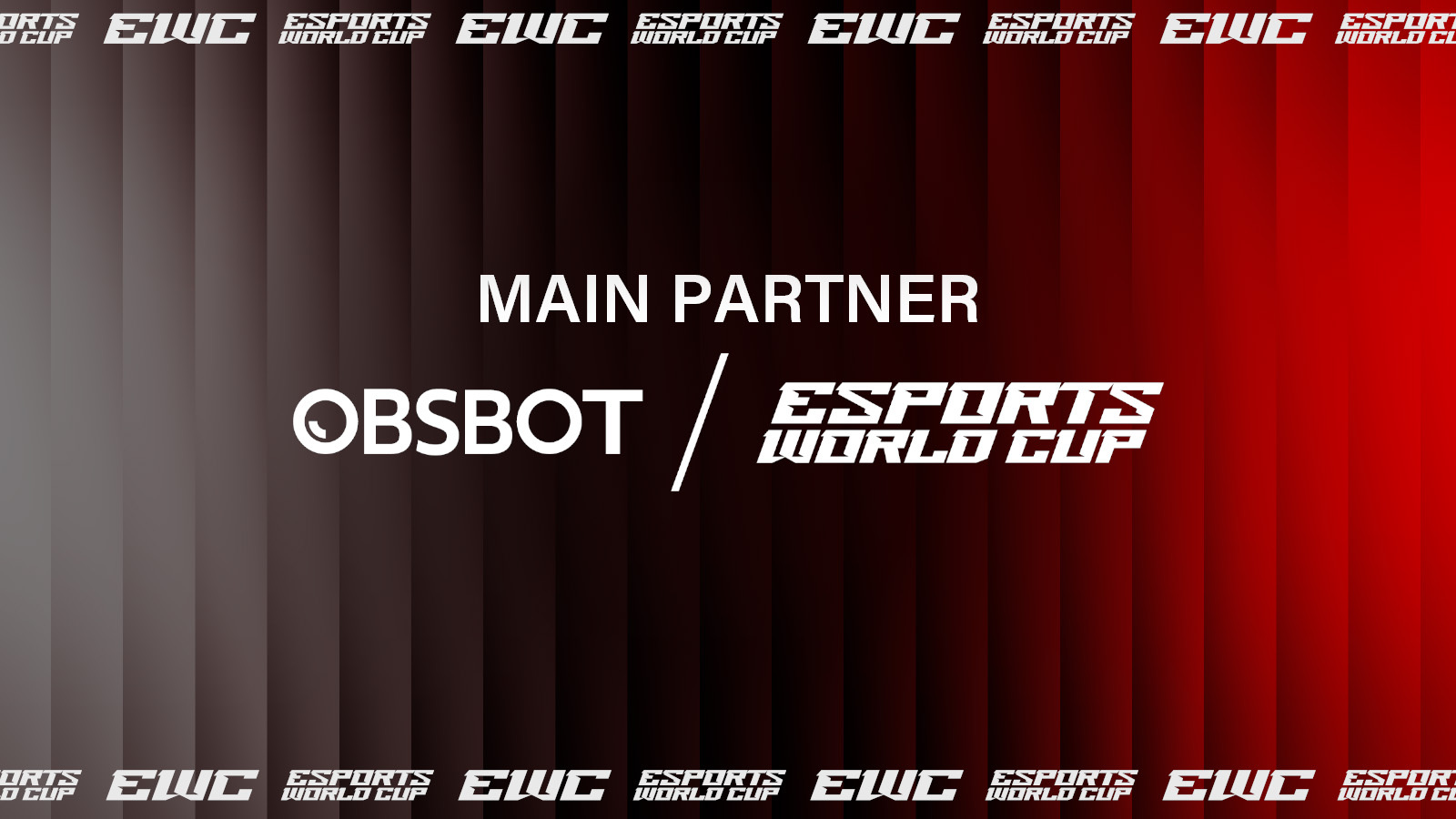
“Our partnership with Obsbot is at the heart of this vision. Its cutting-edge camera technology demonstrates the power of AI in esports today, capturing the intensity and emotion that defines competition at this level and bringing fans into the moment.
“We are thrilled to have Obsbot as our official camera and webcam partner as we continue raising the bar for esports experiences worldwide.”
At the core of Obsbot’s offering are two standout devices, the Tail 2 smart-tracking camera and the Tiny 2 webcam.
The Tail 2 is a 4K PTZR live production camera powered by AI Tracking 2.0, designed to deliver smooth, cinematic shots with minimal manual input. It integrates easily into professional broadcasting environments via NDI and other pro-grade outputs.

The Tiny 2, Obsbot’s flagship webcam, brings the same tracking intelligence to the desktop, offering exceptional image quality and responsiveness tailored for streamers and creators.
Both cameras will be used across player areas, streaming stations, and fan-facing activations at the Esports World Cup, helping document gameplay, reactions and behind-the-scenes moments with heightened realism and clarity.
“We believe that everyone’s story deserves to be seen and shared, and the Esports World Cup provides the perfect platform for us to showcase our vision,” said Liu Bo, CEO & founder of Obsbot.
“Through our partnership with the Esports World Cup, we are bringing our cutting-edge AI-powered camera technology to millions of gamers and content creators, celebrating the excitement, drama, and triumphs of elite competition on the world’s biggest stage.
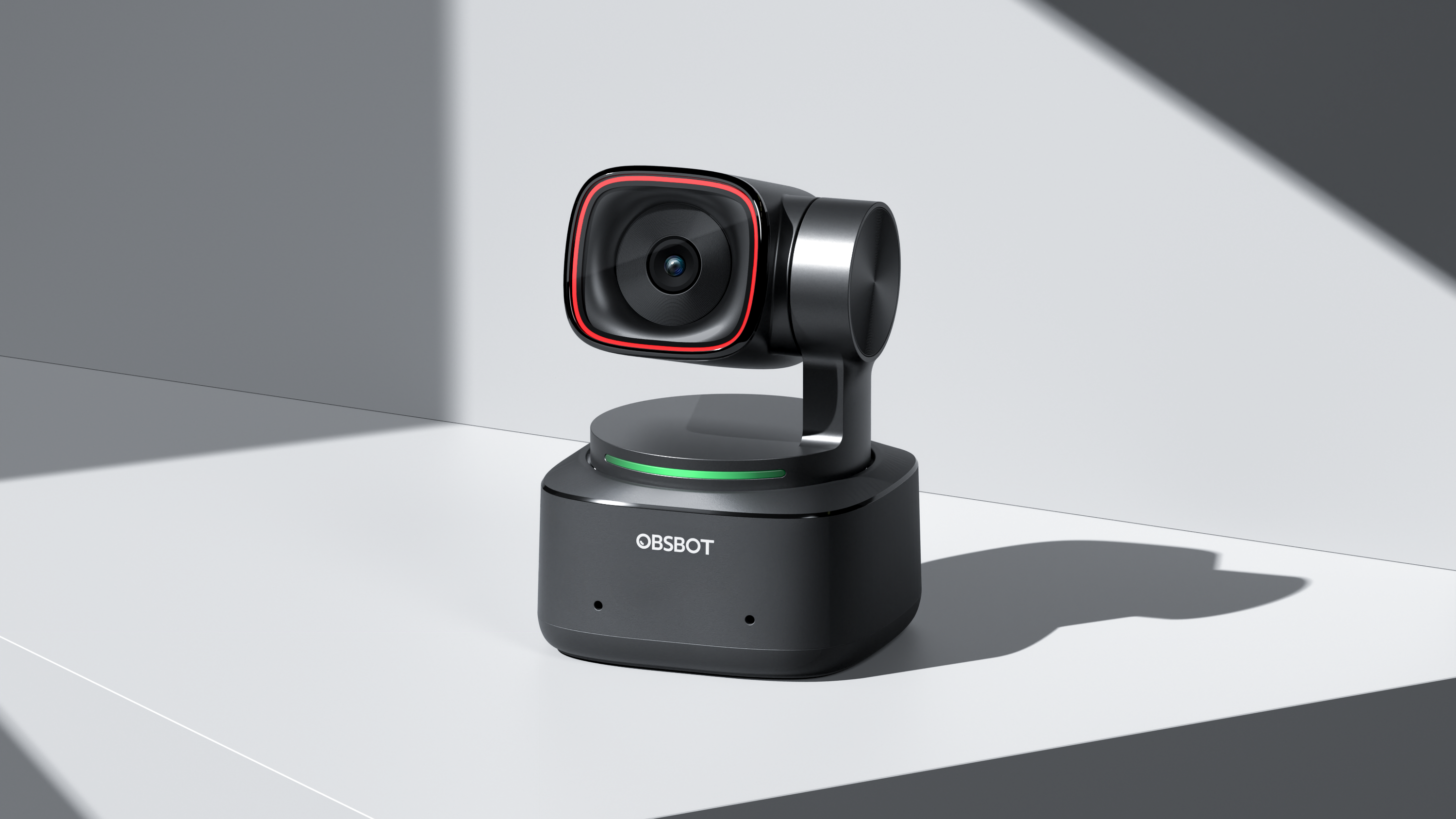
“This collaboration is about more than just capturing moments; it’s about empowering a new generation of storytellers to create, share, and inspire with professional-grade tools that are as dynamic as the esports community itself.”
With over 25 tournaments across 24 games, 2,000 elite players, 200 Clubs, and a record-breaking $70 million (around £53 million / AU$109 million) prize pool, the Esports World Cup 2025 in Riyadh is poised to be the largest celebration of esports ever staged.
Fans attending in person or tuning in online can expect a rich visual experience that reflects not only the scale of the competition but the sophistication of the technology powering it.
Obsbot’s AI camera technology will play a vital role in elevating that broadcast experience, keeping up with the pace of play, tracking the intensity of the moment, and helping ensure the world sees every angle of this global esports spectacle.
you may also like
Check out our guides to the best 4K webcams and the best PTZ cameras.
Technology
Big Tech goes from stock market’s safest bet to biggest question – The Mercury News
By Jeran Wittenstein and Carmen Reinicke, Bloomberg For most of the past decade, a handful of high-flying technology companies have pushed the US stock market to record highs and become cornerstones of investment portfolios. But that’s collapsed this year. Despite the S&P 500 Index clawing back into the green for 2025 after being whipsawed by […]
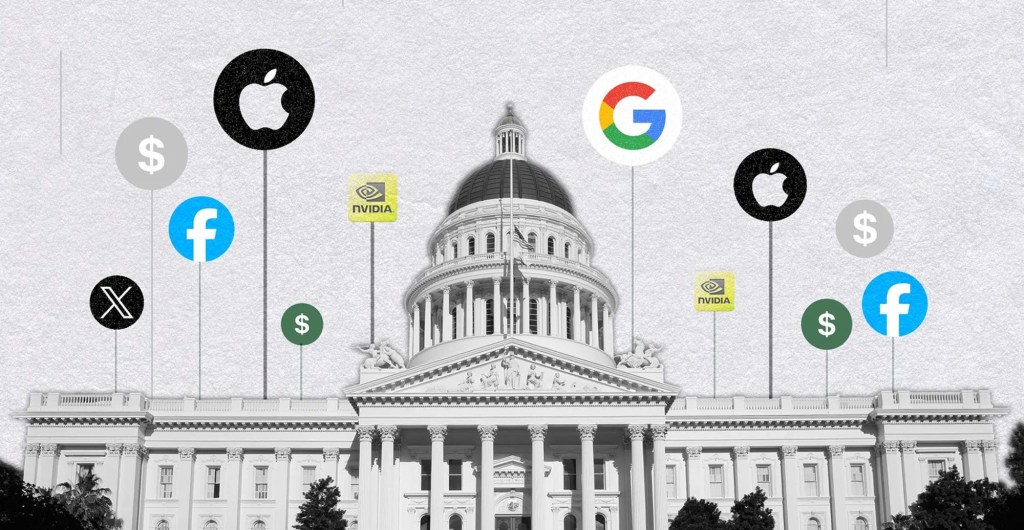
By Jeran Wittenstein and Carmen Reinicke, Bloomberg
For most of the past decade, a handful of high-flying technology companies have pushed the US stock market to record highs and become cornerstones of investment portfolios. But that’s collapsed this year.
Despite the S&P 500 Index clawing back into the green for 2025 after being whipsawed by President Donald Trump’s vacillating trade policies, tech giants like Apple Inc., Alphabet Inc., Amazon.com Inc. and Tesla Inc. are still down. The Bloomberg Magnificent 7 Index — which includes those companies as well as Meta Platforms Inc., Microsoft Corp. and Nvidia Corp. — is underperforming the S&P 500, and if that holds through Dec. 31, it would make this just the second year in the last 10 where that’s happened.
Technology
Ducati adds 50 tiny sensors to motorbikes to amp up its racing game
MotoGP is high-speed, high-tech motorcycle racing. The fastest riders in the world compete on specialized, purpose-built motorcycles from companies like Ducati, Honda, Yamaha on the world stage in this series, which is considered the most prestigious in the game. Riders reach incredible speeds on their machines up to 220 miles per hour, and races can […]
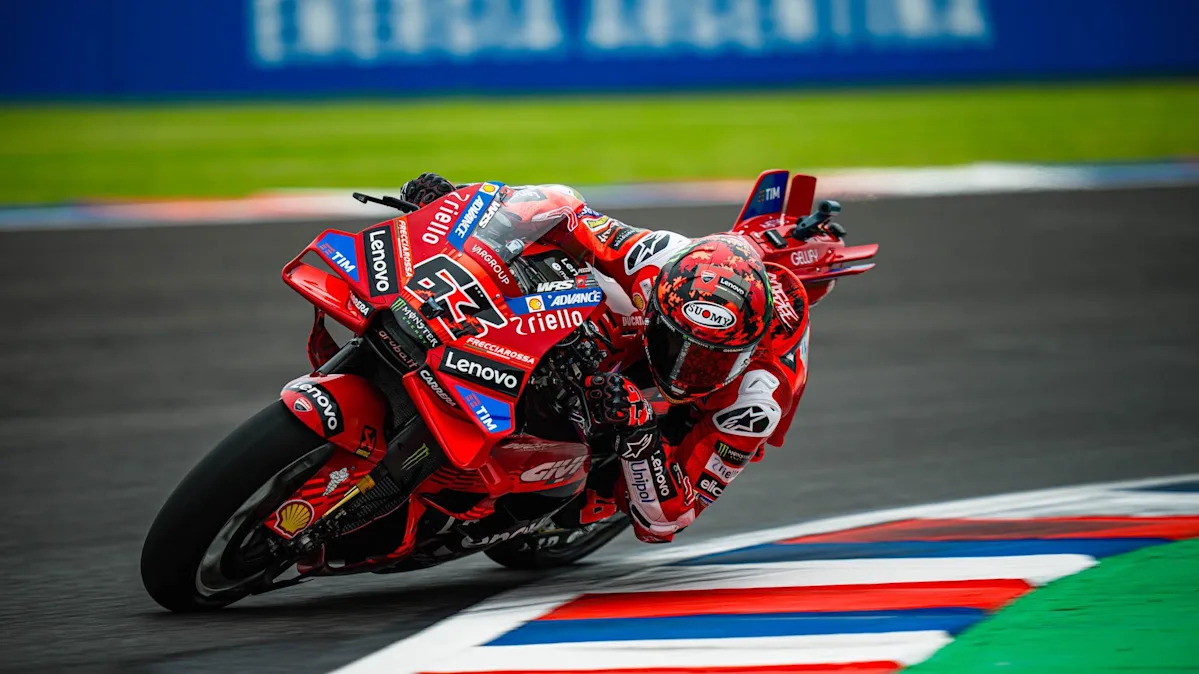
MotoGP is high-speed, high-tech motorcycle racing. The fastest riders in the world compete on specialized, purpose-built motorcycles from companies like Ducati, Honda, Yamaha on the world stage in this series, which is considered the most prestigious in the game. Riders reach incredible speeds on their machines up to 220 miles per hour, and races can go 350 turns with gravity-defying leaning that scrapes elbows and knees. This Grand Prix is for the toughest of the tough on the moto circuit.
Behind the riders and the machinery is a boatload of data and technology; we’re talking massive amounts of data in numbers that make your head spin. As tech company Lenovo puts it, when it comes to MotoGP–a sport in which every millisecond counts–data can mean the difference between a first and last place finish.
Advertisement
Lenovo and Italian motorbike manufacturer Ducati work hand in hand to create a champion racing team with information gathered by 50-plus sensors that track tire rotation, speed, grip, acceleration, and more. Motorcycle racing, at the highest echelon, has evolved way beyond just the machinery or even the skill of the rider. Without the technology, any team would be left in the dust.
The data journey
In the past, the only way to evaluate the outer limits of what a motorbike could endure was to disassemble a crashed bike. Today, a multi-pronged approach to data collection takes that process up several notches. Every time a bike enters the pit garage, an in-person team and a crew from the Ducati Lenovo Remote Garage at Ducati’s headquarters in Bologna, Italy analyzes performance.

Via 50 sensors on each bike, Ducati engineers collect tons of data they can parse and assess. Image: Ducati/Lenovo
No matter where the team is racing, data streams in from the motorbike sensors. Off-site engineers analyze information from the track, making tiny tweaks to the bike and its operation. That way, every qualifying lap may be reviewed and fine tuned for the best competitive outcomes.
Advertisement
“We debrief after each session, aligning with the rider on the sections and corners in which we think that he can improve his performance,” says David Attisano, the data and performance analysis manager for Ducati Racing. “We review with the rider his maneuvers and what we can expect to improve and how. For example, if the data shows that the rider can brake two meters later than he is, that’s a huge distance in this race.”
For the MotoGP series, Ducati has three different teams with a total of six riders. Each Ducati rider receives the data not just about his own ride but for all the other riders, so they can track what the other five are doing. That’s a giant amount of data.
“We can push each other to the limit because we can see what the other riders are doing and comparing, then we can highlight and suggest some changes in their riding style,” Attisano explains.

Through its partnership with technology company Lenovo, Ducati collects and analyzes data to push its bikes to the limit and win races. Image: Lenovo/Ducati
Data leads to improvements for road bikes, too
Per official MotoGP rules, the sensors can’t transmit the data while the bikes are in motion. As soon as the bike gets to the garage, the engineers download the data. From this point, the data analysis process begins. At this point, the partnership is especially critical as the servers are developed by Lenovo specifically for Ducati. On top of that, there are data signals created with a custom algorithm and simulating based on engineering knowledge about the bikes. The team can even create a detailed “digital twin” of the course that maps each twist and turn, using 200GB of data per circuit.
Advertisement
“If the rider tells us that the traction control is not working properly, our electronics engineers can adjust the ECU,” says Attisano. “In our competition, the human factor is very important. We rely on the data and the humans do the last mile to gain the result and to achieve victory.”
Sure, data clearly plays a big part, but human interpretation is still a critical aspect to translate the results. Even those who know nothing of motorcycles can create algorithms or artificial intelligence to offer some hints or tips, but without input from the team, the data has no context. The technology, Attisano emphasizes, is intended to augment the capabilities of human beings, not to replace them.

Italian motorbike manufacturer Ducati makes high-speed, high-tech machines. Image: Ducati/Lenovo
“The behavior of the bike is very complicated–it’s very difficult to understand if you have not studied it at university,” he says. “In our experience, the exchange of knowledge between engineers and data scientists is very important.”
Ducati’s data collection on the competitive side feeds into the safety and reliability for all riders, including those who like to take their motorbike for a spin on any given Sunday; not just competitive situations. Every time the bike emerges from the pit at a MotoGP race, the engineers strive to be sure it’s in good form and safe for the rider. Every improvement via the data collected from 50 tiny sensors on each factory-made racing bike leads to a better ride for casual street riders, too.
-

 Fashion2 weeks ago
Fashion2 weeks agoHow to watch Avalanche vs. Stars Game 7 FREE stream today
-

 High School Sports2 weeks ago
High School Sports2 weeks agoWeb exclusive
-

 Sports2 weeks ago
Sports2 weeks agoPrinceton University
-

 Sports1 week ago
Sports1 week ago2025 NCAA softball bracket: Women’s College World Series scores, schedule
-

 Motorsports2 weeks ago
Motorsports2 weeks agoBowman Gray is the site of NASCAR’S “Advance Auto Parts Night at the Races” this Saturday
-

 NIL2 weeks ago
NIL2 weeks ago2025 Big Ten Softball Tournament Bracket: Updated matchups, scores, schedule
-

 NIL2 weeks ago
NIL2 weeks agoPatty Gasso confirms Sophia Bordi will not finish season with Oklahoma softball
-

 Motorsports2 weeks ago
Motorsports2 weeks agoMOTORSPORTS: Three local track set to open this week | Sports
-

 Motorsports2 weeks ago
Motorsports2 weeks ago$1.5 Billion Legal Powerhouse Announces Multi-Year NASCAR Deal With Kyle Busch
-
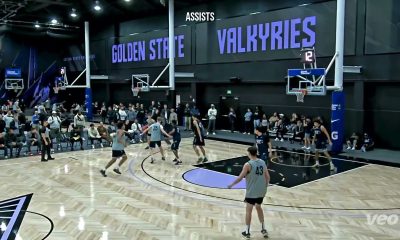
 High School Sports2 weeks ago
High School Sports2 weeks agoMaryland Basketball Recruiting











 (via @Washington/IG)
(via @Washington/IG)















